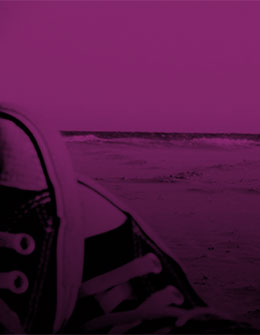Drugs & Depression
According to a recent national survey, two million teens aged 12 to 17 (8%) felt depressed at some point in the course of a year.1 At the same time, just over 19% of teens used illicit drugs during that same year.2 Is there a connection? Here’s what recent studies say about teens, depression, and use of illicit drugs and alcohol:
- More teens who used illicit drugs experienced depression in 2008 than teens who did not use drugs. Among 12- to 17-year-olds who experienced depression in 2008, approximately 37% had used illicit drugs that same year. In comparison, teens who did not experience depression in 2008 were much less likely to have used illicit drugs (17%). This pattern was similar for most specific types of illicit drug use, including the use of marijuana, cocaine, hallucinogens, the nonmedical use of prescription-type psychotherapeutics, and alcohol and cigarettes.3 The connection between depression and illicit drug use is clear; however, it is not clear whether illicit drug abuse causes depression or that depressed teens are more likely to use illicit drugs.
- Research shows that inhalant use is associated with symptoms of depression. Between 2004 and 2006, an estimated 218,000 teens aged 12 to 17 used inhalants and also experienced depression in the past year. The connection between depression and inhalant use is clear; however, it is not clear whether inhalant abuse causes depression or that depressed teens are more likely to use inhalants. Approximately 28% of 12 to 17 year-olds who used inhalants and had depression that same year, started using inhalants before they first experienced depression; approximately 43% experienced depression before inhalant use; and 28.5% started using inhalants and experienced depression at about the same time.4
- Teens aged 12 to 17 who abuse prescription drugs (including opiates, stimulants, tranquilizers, and sedatives) are more likely to have experienced depression.5
- Hangovers from drinking and sudden withdrawal from alcohol typically produce a general state of unhappiness, with elements of anxiety and depression mixed with physical discomfort.6
- Teens who start using marijuana before age 15 are more likely to suffer from anxiety and depression in early adulthood.7
- In 2008, teens who experienced depression over the past year were more likely to report heavy use of alcohol than those who did not experience depression (3.4% vs. 1.8%).8
- A study that used data from nearly 19,000 teens showed that girls who experimented with alcohol were more than twice as likely to have symptoms of depression as girls who abstained completely. Girls who used intravenous drugs were almost 18 times as likely to have symptoms of depression as girls who abstained. Boys who drank alcohol and were binge drinkers were two and a half times as likely to experience depression as boys who abstained.9
- Substance Abuse and Mental Health Services Administration (SAMHSA) – NSDUH: Figure 8.10
National Survey on Drug Use and Health (NSDUH), 2008
View Source [↩] - Substance Abuse and Mental Health Services Administration (SAMHSA) – NSDUH: Figure 2.5
National Survey on Drug Use and Health (NSDUH), 2008
View Source [↩] - Substance Abuse and Mental Health Services Administration (SAMHSA) – NSDUH: Figure 8.11
National Survey on Drug Use and Health (NSDUH), 2008
View Source [↩] - The NSDUH Report: Inhalant Use and Major Depressive Episode among Youths Aged 12 to 17: 2004 to 2006
Substance Abuse and Mental Health Services Administration (SAMHSA), 2008
View Source [↩] - Schepis TS, et al. Characterizing adolescent prescription misusers: a population-based study
Journal of the American Academy of Child and Adolescent Psychiatry, 47(7):745-54, 2008 [↩] - Nurnberger, John et all. Is There a Genetic Relationship Between Alcoholism and Depression?
Alcohol Research & Health. NIDA Publications. Vol. 26, No. 3, 2002
View Source [↩] - Hayatbakhsh, MR et al. Cannabis and anxiety and depression in young adults: A large prospective study
Journal of the American Academy of Child and Adolescent Psychiatry, 46(3):408-17, 2007 [↩] - Substance Abuse and Mental Health Services Administration (SAMHSA) – NSDUH: Figure 8.11
National Survey on Drug Use and Health (NSDUH), 2008
View Source [↩] - Waller, M.et al. Gender differences in associations between depressive symptoms and patterns of substance use and risky sexual behavior among a nationally representative sample of U.S. adolescents
Archives of Women’s Mental Health, 9(3): 139-150, 2006
View Source [↩]





